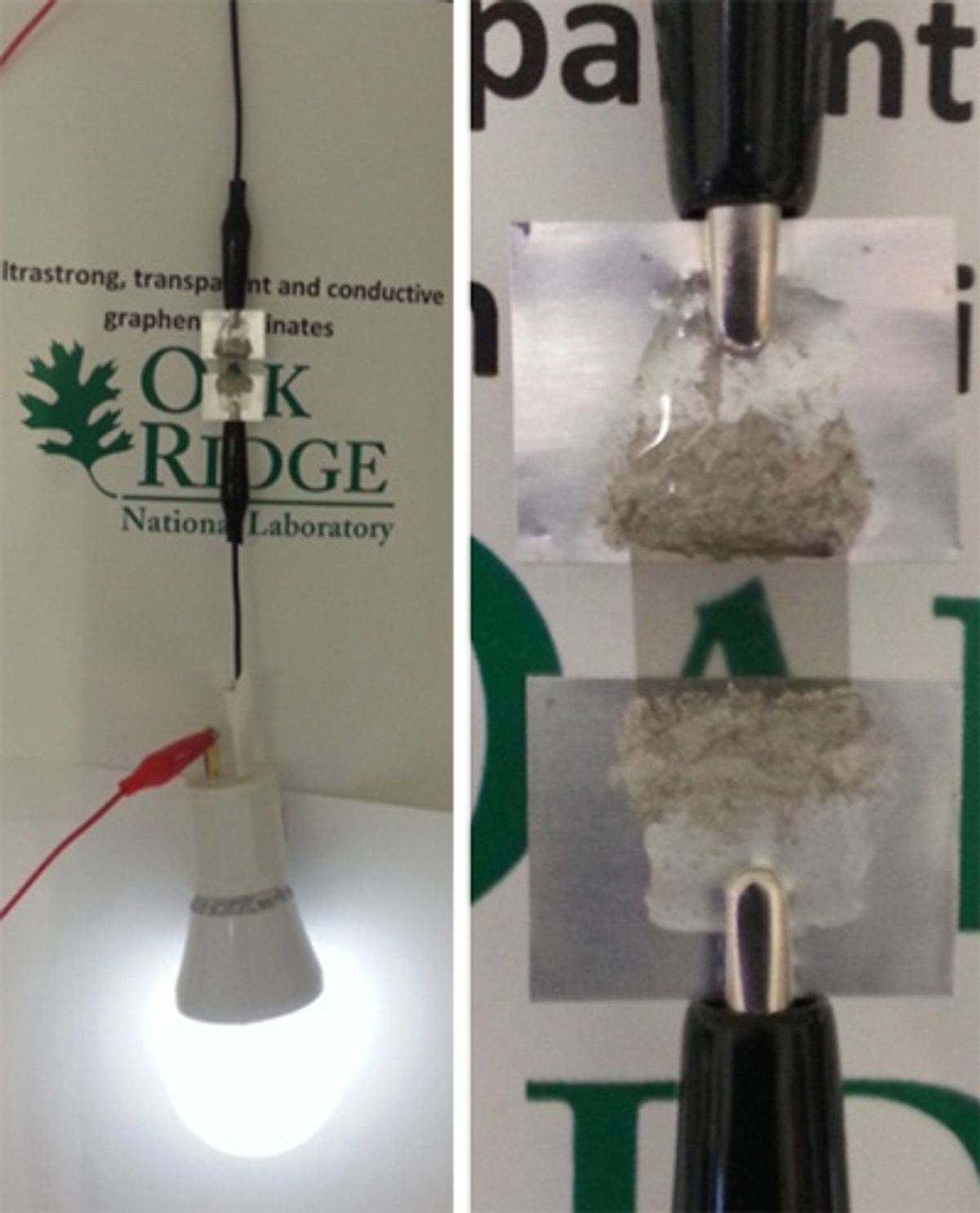Graphene is a wonder material — flexible, transparent, light, strong, and electrically and thermally conductive, qualities that have led to research worldwide into weaving these atom-thick layers of carbon into advanced devices. Now scientists have demonstrated what they say is the first large-scale fabrication of a graphene composite—a material that combines graphene with another substance to form something with new properties.
Until now, labs could only incorporate tiny flakes of graphene or graphene-like materials into composites. The mechanical and electrical capabilities of these composites were never as good as scientists would have liked because of weak links between the flakes, and the flakes often clumped together, leading to irregularities across the composites.
Now scientists at Oak Ridge National Laboratory and their colleagues have fabricated composites made up of plastic and 5-centimeter-by-5-cm sheets of graphene. This advance builds on previous work of theirs synthesizing graphene via chemical vapor deposition, which involves growing sheets of the material directly from hydrocarbon vapor on metal catalysts such as copper.
Using large flat or rolled-up graphene sheets avoids the previous problem of flake clumping. All in all, these new composites outperform state-of-the-art graphene composites in terms of both mechanical properties and electrical conductivity while using 50 times less graphene, potentially helping make this material competitive in the market, the researchers say.
Future research could explore reducing the cost and demonstrating the scalability of these composites. The scientists detailed their findings online 28 April in the journal Applied Materials & Interfaces.
Charles Q. Choi is a science reporter who contributes regularly to IEEE Spectrum. He has written for Scientific American, The New York Times, Wired, and Science, among others.



